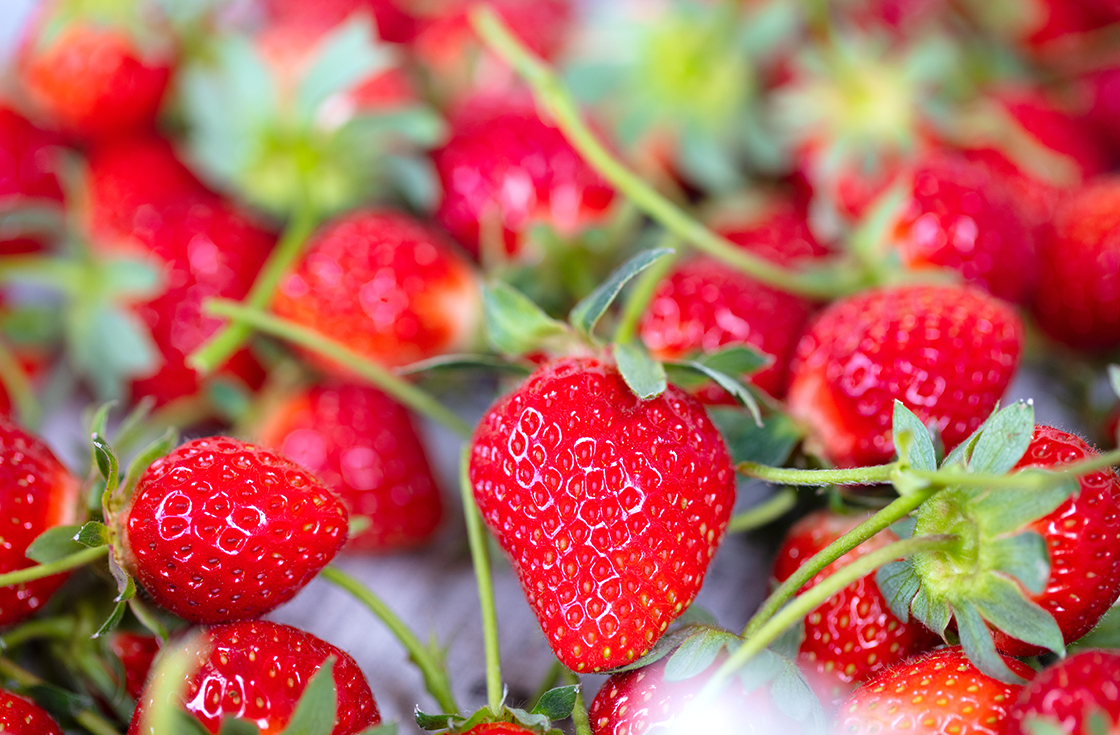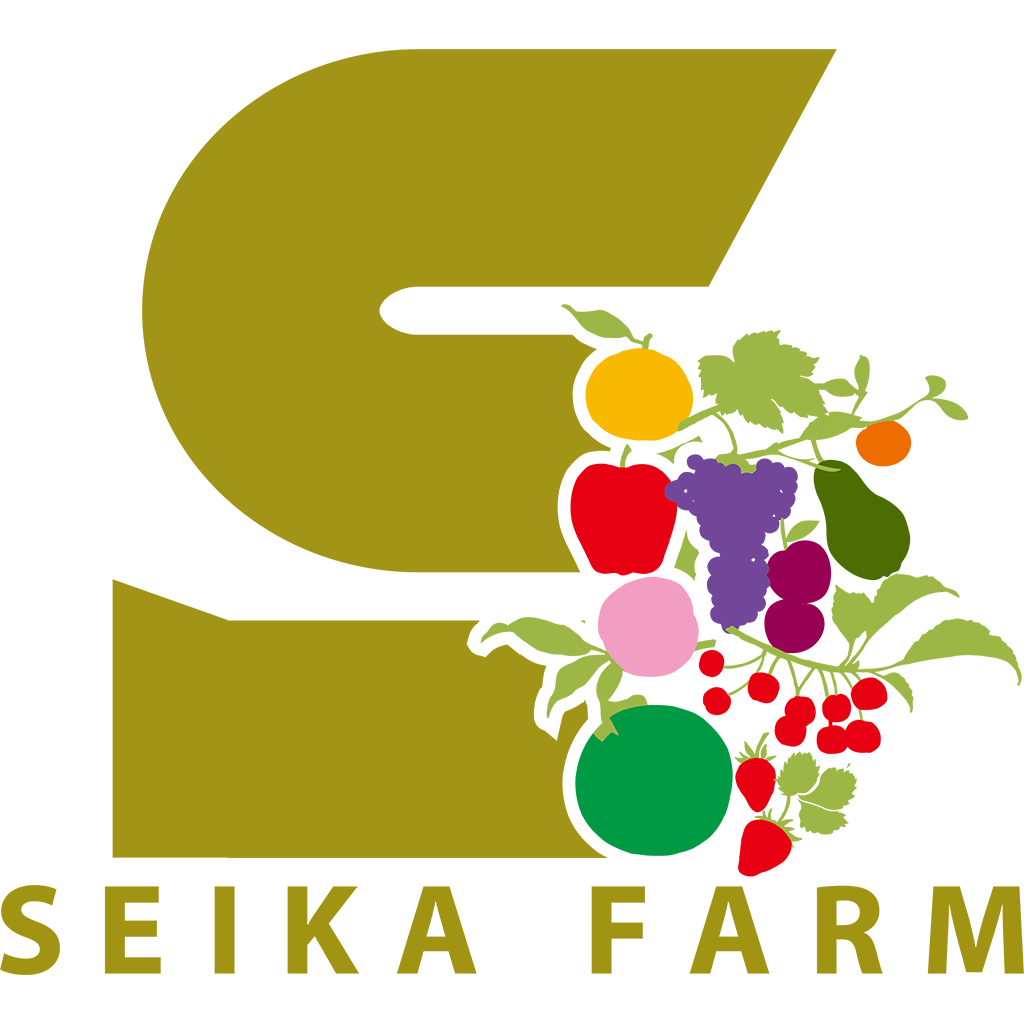
Yamagata Prefecture Fruits
Yamagata Prefecture has the largest harvest of cherries, La France and other Western pears in Japan. Yamagata Prefecture is also a fruit tree kingdom, boasting Japan's top harvest of apples, watermelons, grapes, melons, peaches, and other fruits. The four seasons of spring, summer, fall, and winter, as well as the clear temperature difference between day and night, nurture delicious fruits. SEIKA FARM brings you Yamagata's seasonal fruits from all four seasons.

Yamagata Prefecture produces the largest quantity of cherries in Japan
Yamagata cherries are in season in early summer. Bite into the taut peel, and you will be filled with bright acidity and refreshing sweetness. Yamagata Prefecture accounts for 70% of the nation's production. It is said that the climate with a large temperature difference between day and night nurtures high-quality, sweet fruits. The sweetness of the fruit can only be produced by the temperature difference between hot days and cool nights. Please try "Sato Nishiki" and "Beni Shuho," the king of Yamagata's representative cherries! We ship at the best time of the season.
[Cultivation Area]Kaminoyama City and Tendo City, Yamagata Prefecture Own farms and contract farms
[Shipping time]May to July




Its sweetness nurtured by Yamagata Prefecture's climate Peaches
The Yamagata Basin is surrounded by the Ou Mountains and the Dewa Okuryo Mountains. The sweetness can only be produced by the temperature difference between hot days and cool nights. Please enjoy the juicy juice of sweet white peaches and the rich flavor of yellow peaches. We ship at the best time of the season.
[Cultivation Area]Tendo City, Yamagata Prefecture Own farms and contract farms
[Shipping time]August to September
At Seika Farm, we operate P-shop Momosen, a Yamagata peach specialty store.




In-house brand Peach SEIKA
A new variety of our own brand peaches developed jointly with contract farmers in Yamagata over a period of six years. The new experience of outstanding sweetness, fine taste and aroma. We hope you will try this rare peach.
[Cultivation Area]Kaminoyama City,Tendo City, Yamagata Prefecture Own farms
[Shipping time]August to September




Third in the nation in terms of production High-quality grapes
Yamagata Prefecture ranks third in Japan in terms of grape production, and is the largest producer of Delaware grapes in Japan. The climate conditions, such as ample sunshine, large temperature differences between day and night, and little rainfall during the ripening period, nurture high quality grapes. We ship at the best time of the season.
[Cultivation Area]Yamagata City, Yamagata Prefecture Own farms and contract farms
[Shipping time]September to October




Exceptional sweetness, aroma and texture
Yamagata La France
The overflowing juice and melt-in-your-mouth texture of La France. At first, La France attracted little attention because of its poor appearance and the time and effort required to cultivate it. Nowadays, La France has been called the "Queen of Fruits" for its rich aroma and mellow flesh, and has been acclaimed as the best of all Western pears. Currently, Yamagata accounts for about 70% of the nation's production, and has become synonymous with Yamagata's fruits. Pre-cooling and additional ripening after harvesting produces the elegant and fragrant La France.
[Cultivation Area]Nakayama-cho, Higashimurayama-gun, Yamagata Prefecture contract farms
[Shipping time]November to December




Obanazawa watermelon, the best in Japan
The Yamagata Basin is surrounded by the Ou Mountains and the Dewa Oka Ridge. The temperature difference between hot days and cool nights produces watermelons with a crunchy texture and strong sweetness. Yamagata Prefecture ranks third in watermelon harvest by prefecture. Most of the watermelons are Obanazawa watermelons, which are shipped from July to August, making Obanazawa the best summer watermelon in Japan. We ship at the best time of the season.
[Cultivation Area]Obanazawa City, Yamagata Prefecture contract farms
[Shipping time]July to August




Shonai persimmon, a representative of autumn in the Shonai region of Yamagata Prefecture
Shonai persimmon is a flat, square, seedless persimmon. It is the representative fruit of autumn in the Shonai region of Yamagata Prefecture. The flesh is dense and tight, and has a fresh texture. Its high sugar content and elegant sweetness make it a delightful delicacy.
[Cultivation Area]Tsuruoka City, Yamagata Prefecture contract farms
[Shipping time]October to November




Yamagata's apples rank third in Japan in terms of production
The "San Fuji" grapes are grown in the sunlight without bags. Its crispy pulp has a good balance of sweetness and acidity, and has an excellent eating quality. Yamagata's San Fuji, whose pulp is filled with candy-colored honey, is carefully selected and delivered in season. In addition to Fuji, we also have "Shuyo", "Shinano Sweet", "Ohorin", "Tsugaru", and others. Yamagata's apples are full of deliciousness from early to late ripening varieties.
[Cultivation Area]Asahi-cho, Nishimurayama-gun, Yamagata Prefecture contract farms
[Shipping time]November to January

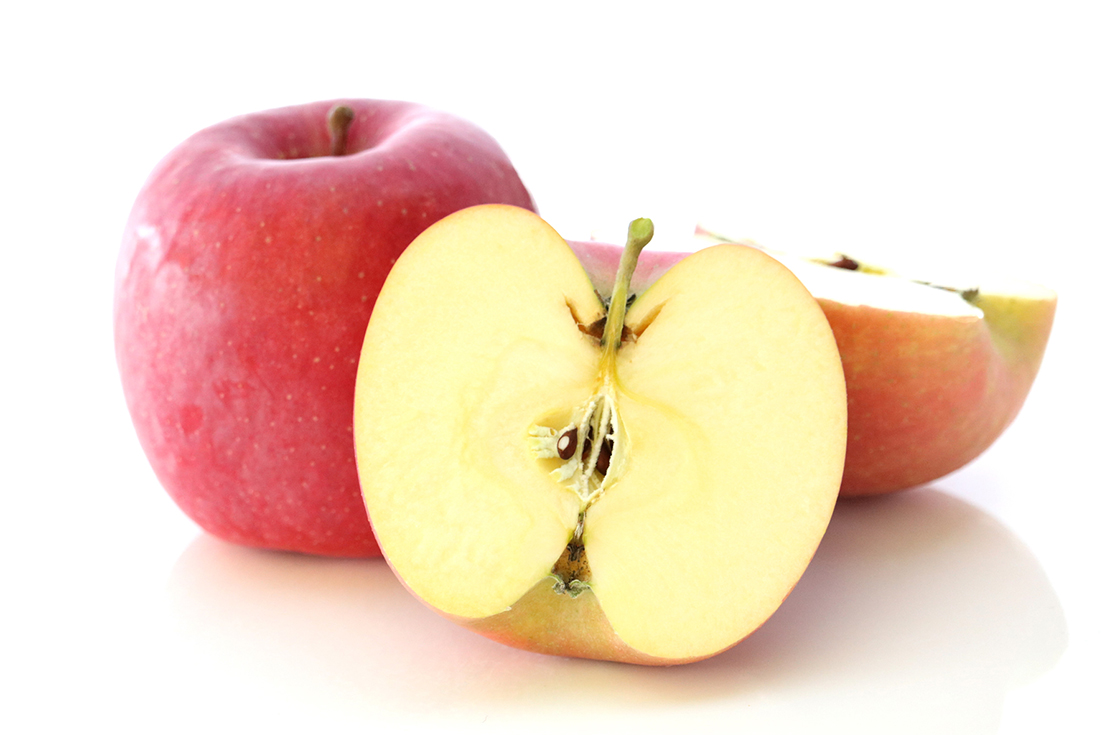


More than 250 years of cultivation history Yamagata pears
Pear cultivation has been practiced in Yamagata Prefecture for many years and boasts a history of over 250 years. There are several pear-growing regions in Yamagata Prefecture, but no one can talk about them without mentioning the "Kariya pears. The old Kariya area, with its prime location on a large area of soil containing nutrients from the beech trees of Mount Chokaisan, has become a famous pear-growing area that carries on the tradition of pear cultivation into the modern age.
[Cultivation Area]Tsuruoka City, Yamagata Prefecture contract farms
[Shipping time]September to October

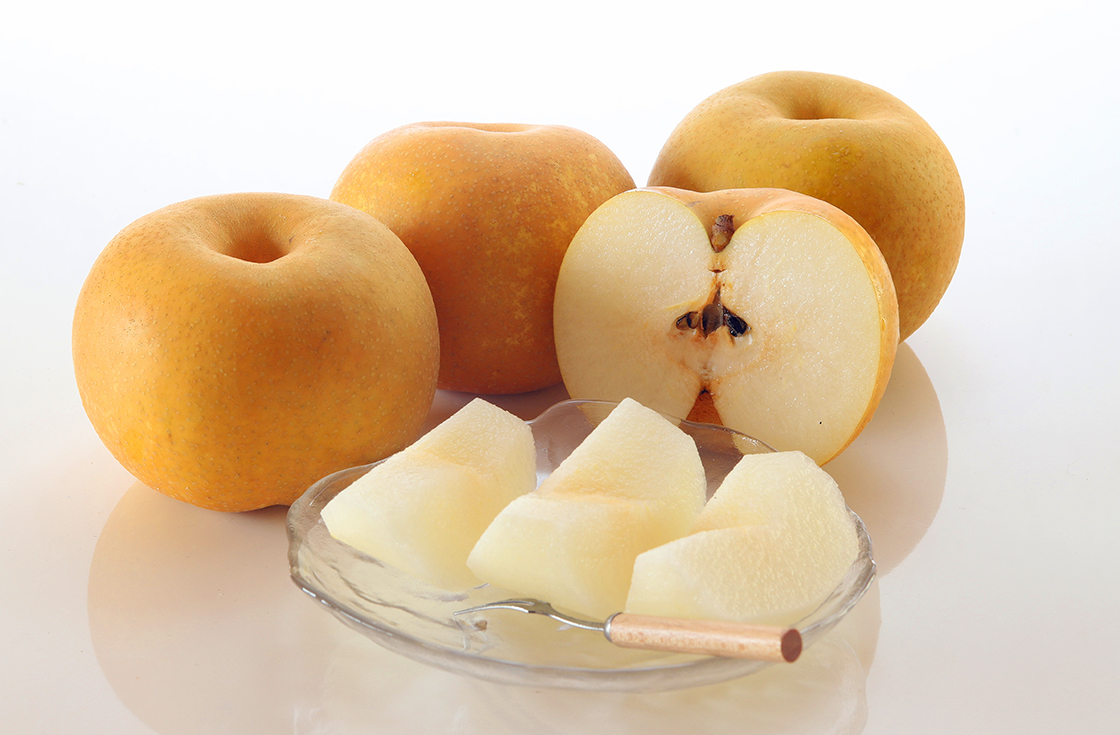


The best climate for melon cultivation Shonai Sand Dune Melon
Shonai Dune Melon is a generic name for melons grown on the dunes along the Japan Sea coast in the Shonai region of Yamagata Prefecture. Major melon varieties grown include Andes melon, Tsuruhime, Quincy, and Mariage. It is said that melons prefer a growing environment with high sunlight, low humidity, and large temperature fluctuations. The Shonai Sand Dunes have all of these features, making the climate ideal for melon cultivation, and the high sugar content and quality of the melons are highly regarded throughout Japan.
[Cultivation Area]Tsuruoka City, Yamagata Prefecture contract farms
[Shipping time]July to August




Fragrant, sweet and large Yamagata plums
In the mid-19th century, plums were brought from Japan to California, where they were crossed with American plums and improved. After it was reimported, it was further improved, and many varieties are now available. Plum is the English name for plum. In Yamagata Prefecture, cultivation began around the 1970s, with more than 80% of the production in the inland Murayama region. In recent years, an increasing number of young growers are producing large, sweet, high value-added varieties. One of the characteristic varieties is the "Suncept," which is popular for its hard pulp but rich juice and thick sweet-sour taste. Another is "Sun Rouge," an extremely late variety with red-colored pulp, high sugar content, and moderate acidity. In addition to the traditional varieties of "Oishi Sasai," "Soldum," "Taiyo," and "Akihime," many other high quality varieties are also grown, such as "Oishi Sasai," "Soldum," "Taiyo," and "Akihime," which are fragrant, sweet and large.
[Cultivation Area]Nakayama-cho, Higashimurayama-gun, Yamagata Prefecture contract farms
[Shipping time] July to September
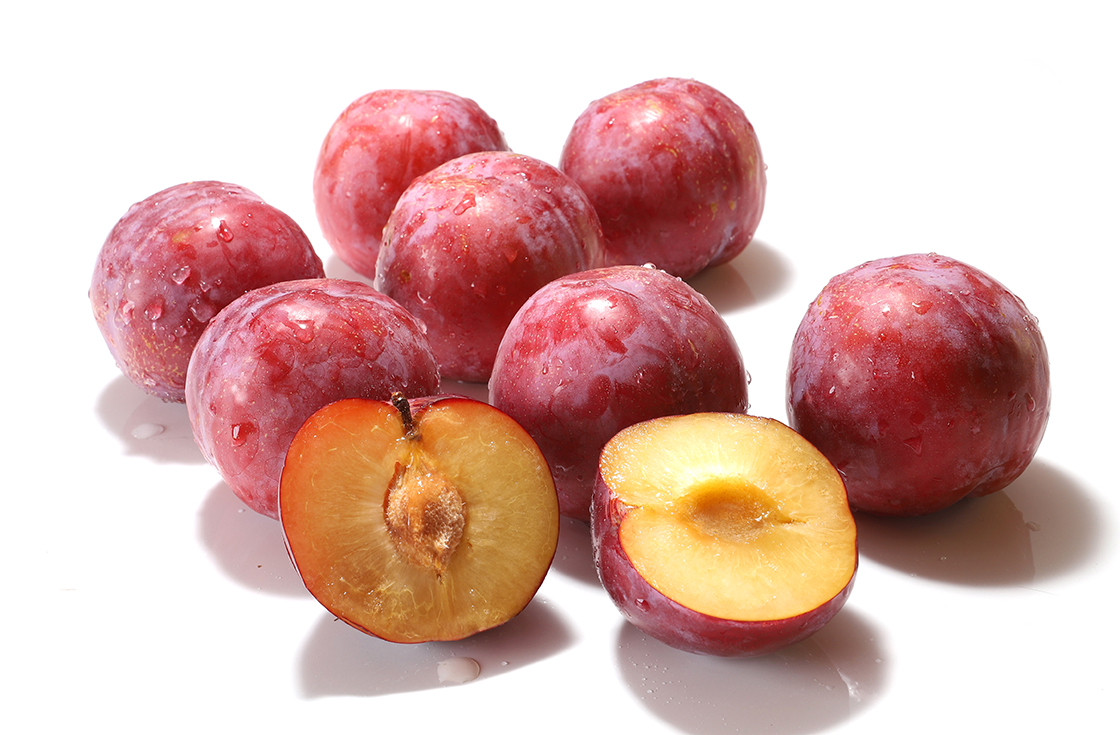



Large, sweet prunes are popular for fresh eating.
Prune refers to the European plum, which is also well known as a dried fruit. Prunes are like siblings to plums, but prunes are characterized by the fact that the fruit and seeds are easily separated from each other. Yamagata Prefecture attempted to cultivate prunes in the 1950s, but they did not become widespread, and only in the Heisei era (1989) did they restart with a large-bodied variety. This variety became well known for its rich flavor when eaten fresh. Because they prefer a cooler climate, prunes are grown in the Murayama region of the prefecture, generally at elevations of 100 to 200 meters above sea level. People tend to think of raw prunes as sour, but we hope you will try our sweet, juicy, fragrant, and perfectly ripe Yamagata Prefecture prunes raw.
[Cultivation Area]Nakayama-cho, Higashimurayama-gun, Yamagata Prefecture contract farms
[Shipping time] September to October




Good quality strawberries can be enjoyed almost all year round.
In Yamagata Prefecture, a variety of strawberries are grown, starting with "Tochiotome" in winter, "Otome Shin" in spring, and "Summer Tiara" in summer and fall. The "Otome Shin" variety for spring harvest, which made its debut in 2004, is an original variety bred by Yamagata Prefecture over a period of 14 years. Currently, "Otome-shin" is grown mainly in the Shonai and Murayama regions of Yamagata Prefecture. Otome-Kokoro" is highly evaluated in the market as a delicious strawberry with a good balance of sweetness and acidity. If you find Yamagata's "Otome-kokoro" in stores, please try it.
[Cultivation Area]Kaminoyama City and Tendo City, Yamagata Prefecture Own farms
[Shipping time]January to September


